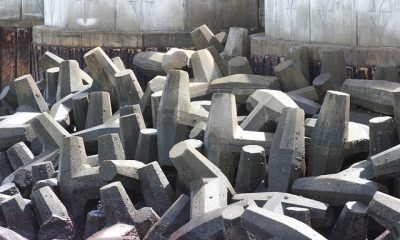Automotive
Catalytic Converters: The Environmental Heroes of Your Vehicle

Many drivers take their vehicles’ catalytic converters for granted. After all, converter problems are sometimes not so obvious like brake pedals that get mushy, a car starter that doesn’t start, or a check engine light that illuminates. However, a faulty converter can cause a lot of problems. After all, this vital component prevents toxic exhaust gasses from entering the atmosphere. Learning more about your catalytic converter can help you better understand how it works and what to look for in a replacement.
Reduce Harmful Emissions
Catalytic converters minimize the amount of harmful pollutants in a car’s exhaust, reducing air pollution and protecting our health. Converters typically include metals such as platinum, palladium, or rhodium as catalysts to break down toxic exhaust gasses into less harmful components. Located between the engine and the muffler, each catalytic converter uses a simple process to transform these noxious gasses:
- Entry: Exhaust gases from the engine enter the catalytic converter through the inlet pipe.
- Contact: These gases pass through a honeycomb-like structure coated with a catalyst.
- Conversion: The catalyst transforms noxious gasses into safer components such as water vapor, carbon dioxide, and nitrogen.
- Exit: The broken-down gas components exit the catalytic converter through the outlet pipe.
Catalytic converters reduce gaseous pollutants such as carbon monoxide, hydrocarbons, and nitrogen oxides. Carbon monoxide can cause headaches, dizziness, and even death. Hydrocarbons are unburned fuel molecules that form atmospheric smog. Nitrogen oxides can cause respiratory problems. Removing around 99% of these compounds from vehicle exhaust, catalytic converters remain a vital part of modern emissions control systems.
Future Innovations
While traditional converters in the past could only reduce carbon monoxide and hydrocarbons, three-way converters can now also break down nitrogen oxides. Thanks to this innovation, today’s catalytic converters reduce emissions, boost fuel efficiency, and increase overall performance.
More recent advancements have further improved catalytic converters. Newer models incorporate lower levels of platinum while still effectively breaking down harmful exhaust gasses. Some have reduced their platinum content by 80%, resulting in lower costs and reduced need for mining. Other newer models have higher oxygen storage capacity, which boosts their efficiency. Newer converters also incorporate lighter metals such as aluminum, stainless steel, and titanium to decrease their overall weight.
Replacing Your Converter
Choosing a new catalytic converter starts with knowing your vehicle’s make, model, and year. Converters come in two styles: direct-fit and universal. Direct-fit converters match a particular vehicle’s exact specs. Universal-fit models work on most vehicles but may need cutting and welding. Pay attention to each model’s features such as body materials, heat shields, warranties, and substrates. Many converters are CARB-compliant, so they’re legal to use in California.
More Shopping Tips
Whether you need to buy a new catalytic converter, CV axle, or anything else, where you shop matters just as much as what you buy. Choosing a reputable aftermarket auto parts retailer ensures you have access to a broad selection of high-quality replacements. Many of these retailers carry both aftermarket and OEM components, giving you many options from which to choose.





















































